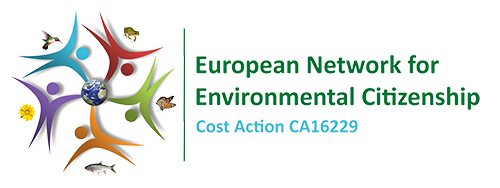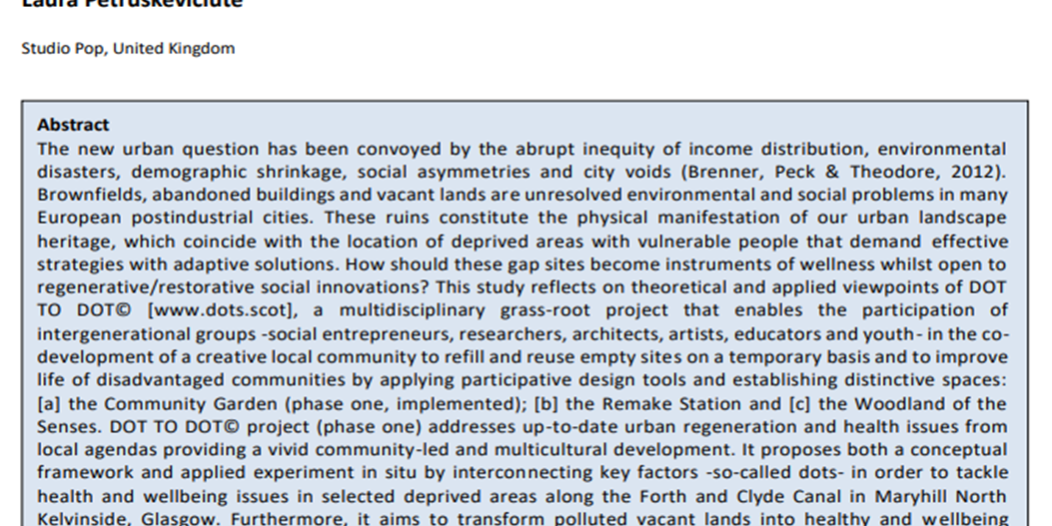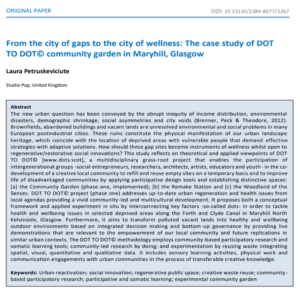From the city of gaps to the city of wellness:
The case study of DOT TO DOT© community garden in Maryhill, Glasgow.
Abstract
The new urban question has been convoyed by the abrupt inequity of income distribution, environmental disasters, demographic shrinkage, social asymmetries and city voids (Brenner, Peck & Theodore, 2012). Brownfields, abandoned buildings and vacant lands are unresolved environmental and social problems in many European postindustrial cities. These ruins constitute the physical manifestation of our urban landscape heritage, which coincide with the location of deprived areas with vulnerable people that demand effective strategies with adaptive solutions. How should these gap sites become instruments of wellness whilst open to regenerative/restorative social innovations? This study reflects on theoretical and applied viewpoints of DOT TO DOT© [www.dots.scot], a multidisciplinary grass-root project that enables the participation of intergenerational groups -social entrepreneurs, researchers, architects, artists, educators and youth- in the codevelopment of a creative local community to refill and reuse empty sites on a temporary basis and to improve life of disadvantaged communities by applying participative design tools and establishing distinctive spaces: [a] the Community Garden (phase one, implemented); [b] the Remake Station and [c] the Woodland of the Senses. DOT TO DOT© project (phase one) addresses up-to-date urban regeneration and health issues from local agendas providing a vivid community-led and multicultural development. It proposes both a conceptual framework and applied experiment in situ by interconnecting key factors -so-called dots- in order to tackle health and wellbeing issues in selected deprived areas along the Forth and Clyde Canal in Maryhill North Kelvinside, Glasgow. Furthermore, it aims to transform polluted vacant lands into healthy and wellbeing outdoor environments based on integrated decision making and bottom-up governance by providing live demonstrations that are relevant to the empowerment of our local community and future replications in similar urban contexts. The DOT TO DOT© methodology employs community-based participatory research and somatic learning tools; community-led research by doing; and experimentation by reusing waste integrating spatial, visual, quantitative and qualitative data. It includes sensory learning activities, physical work and communication engagements with urban communities in the process of transferable creative knowledge.







